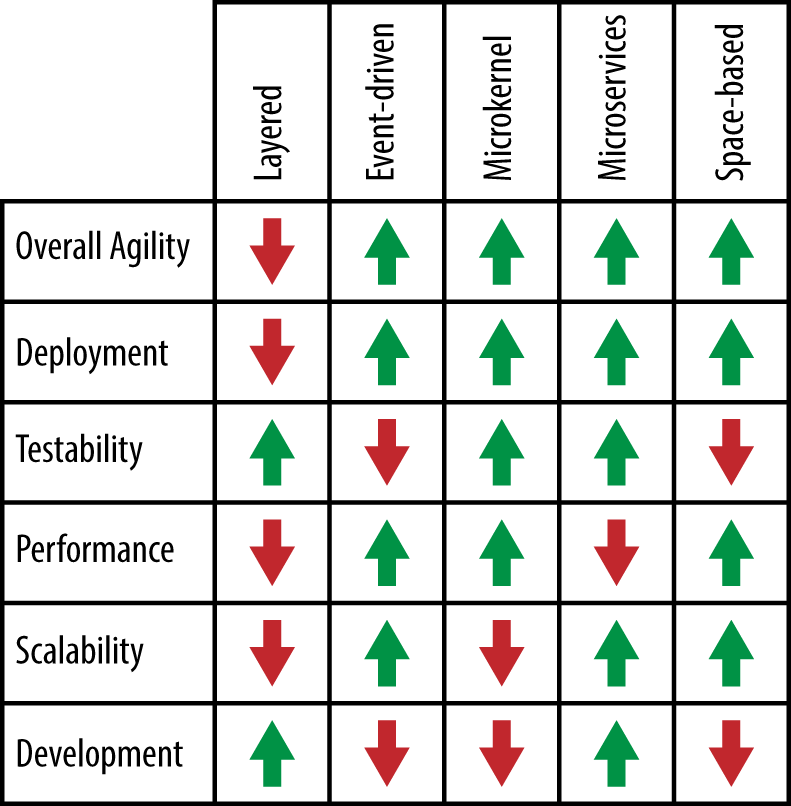Table Of Content

The layered pattern makes it easy to write applications quickly, but a disadvantage is that it can be hard to split up the layers later. It is one of the most popular initialisms in the world, and especially the digital world. It is an acronym for the phrase “read the [freaking] manual”, and has been around for quite some time.
What are the common types of design patterns?
In addition, patterns allow developers to communicate using well-known, well understood names for software interactions. Common design patterns can be improved over time, making them more robust than ad-hoc designs. The design patterns is communicating objects and classes that are customized to solve a general design problem in a particular context. The builder design pattern is “creational,” separating the object construction from the representation.
3 Often-Neglected Soft Skills for Developers to Know - Built In
3 Often-Neglected Soft Skills for Developers to Know.
Posted: Tue, 11 May 2021 07:00:00 GMT [source]
Creational patterns
The latter ensures that a class has only one instance, while also providing a global point that allows access to that instance. Have you ever faced a problem in software design that seems to occur over and over again? In the world of software engineering, these recurring problems have given rise to a powerful concept known as design patterns.

Decorator Method Design Pattern

It is used when we have to perform an operation on a group of similar kind of Objects. With the help of visitor pattern, we can move the operational logic from the objects to another class. Provides a placeholder for another object to control access, synchronization, or adding/removing functionality.
Advantages of Creational Design Patterns
Chain of responsibility pattern is used to achieve loose coupling in software design where a request from the client is passed to a chain of objects to process them. Later, the object in the chain will decide themselves who will be processing the request and whether the request is required to be sent to the next object in the chain or not. All these different types of patterns are useful in solving various software design problems. Patterns are often confused with algorithms, because both concepts describe typical solutions to some known problems.
Enhancing a model-based engineering approach for distributed manufacturing automation systems with characteristics ... - ScienceDirect.com
Enhancing a model-based engineering approach for distributed manufacturing automation systems with characteristics ....
Posted: Wed, 06 Dec 2017 13:50:50 GMT [source]
We will cover different types of design patterns, history of software design patterns, and even provide a quick FAQ section and some tips and advice. Understanding design patterns requires understanding Object-oriented programming (OOP), since design patterns were created to solve common problems that occur within OOP. Code in OOP is found in the form of procedures, known also as “methods”, while data is found in the form of fields, also known as “attributes” or “properties”. The facade design pattern is a “structural” design pattern that helps provide one interface (class) for access to a large body of code / various objects. A facade hides complexities of various sub-systems (often organized into a class) with a simple interface.
Object-oriented programming
The class instantiation is put within a synchronized block so that the method can only be accessed by one client at a given time. In this post, we will go through one basic design pattern for each classified type. MVVM allows for view-specific subsets of a model to be created with the state and logic bound to the view, requiring less logic in the code to run the view. MVVM is ideally suited to help improve performance and allow for greater customization and personalization of the view. As the name implies, Anti-Patterns are typical solutions to common issues that have adverse effects.
The authors refer to inheritance as white-box reuse, with white-box referring to visibility, because the internals of parent classes are often visible to subclasses. Design models in software engineering are representations of the structure, behavior, and interactions of a software system. They help developers visualize and communicate the design of a system before its implementation. In the important process of choosing the right tech stack, ensure that the language has the features needed to avoid an over-reliance on design patterns. Alternatively, the choice in tech stack can lead you to a framework that already has these design patterns implemented directly in the framework in the most ideal way possible. A structural design pattern deals with class and object composition, or how to assemble objects and classes into larger structures.
They advocate for a comprehensive structure of a design pattern that encompasses elements such as motivation, problem, solution, structure, implementation, and examples to ensure meaningful application. The study of design patterns has been excessively ad hoc, and some have argued that the concept sorely needs to be put on a more formal footing. At OOPSLA 1999, the Gang of Four were (with their full cooperation) subjected to a show trial, in which they were "charged" with numerous crimes against computer science.
This poses a hefty drawback if this class is not being used at all by the client application. The contingency plan, if this class is not being used, is the Lazy Instantiation. Design patterns are also language agnostic (for object-oriented languages), although some patterns are more useful with certain languages vs others.
Without proper documentation, it can be difficult for other developers to understand the purpose and functionality of code. Imagine you are designing a loan application form and want to add a validation rule that ensures the applicant’s age is at least 18 years old. You can use the decorator pattern to create a decorator class that adds the age validation rule to the loan application form class. This allows you to add the age validation rule to the loan application form without modifying the loan application form class itself. The idea of a design pattern is an attempt to standardize what are already accepted best practices. In principle this might appear to be beneficial, but in practice it often results in the unnecessary duplication of code.
Defines the skeleton of an algorithm in a method, deferring some steps to subclasses. It sends a continuous stream of messages to a database, web server, log, or another target. It's very flexible but demands a highly efficient and reliable network infrastructure to minimize latency.
This pattern provides ways to decrease object count thus improving application required objects structure. Flyweight pattern is used when we need to create a large number of similar objects. Stick to these best practices, and you'll be well on your way to improving your software development skills in 2023 and beyond. Provides an interface for creating families of related or dependent objects without specifying their concrete classes. It stores static content (information that doesn't change often, like an author's bio or an MP3 file) separately from dynamic content (like stock prices). It's very efficient for delivering content and media that doesn't change often, but downsides include data consistency and higher storage costs.
It is a good choice when you need to define a skeleton of an algorithm, but you want to allow subclasses to vary the specific steps of the algorithm. Consider a scenario where you are developing a stock trading platform and want to notify all users whenever the price of a particular stock changes. You can use the observer pattern to create a subject class that represents the stock data and observer classes that represent the users. When the stock price changes, the subject class can notify all observers, and the observer classes can update their displays accordingly.
Structural object-patterns define ways to compose objects to obtain new functionality. Design patterns help to solve common design issues in object-oriented software. You will continue to learn and practice expressing designs in UML, and code some of these patterns in Java. A design pattern in software engineering is a reusable solution to a commonly occurring problem within a given context. It provides a description or template for how to solve a problem that can be used in many different situations.
No comments:
Post a Comment